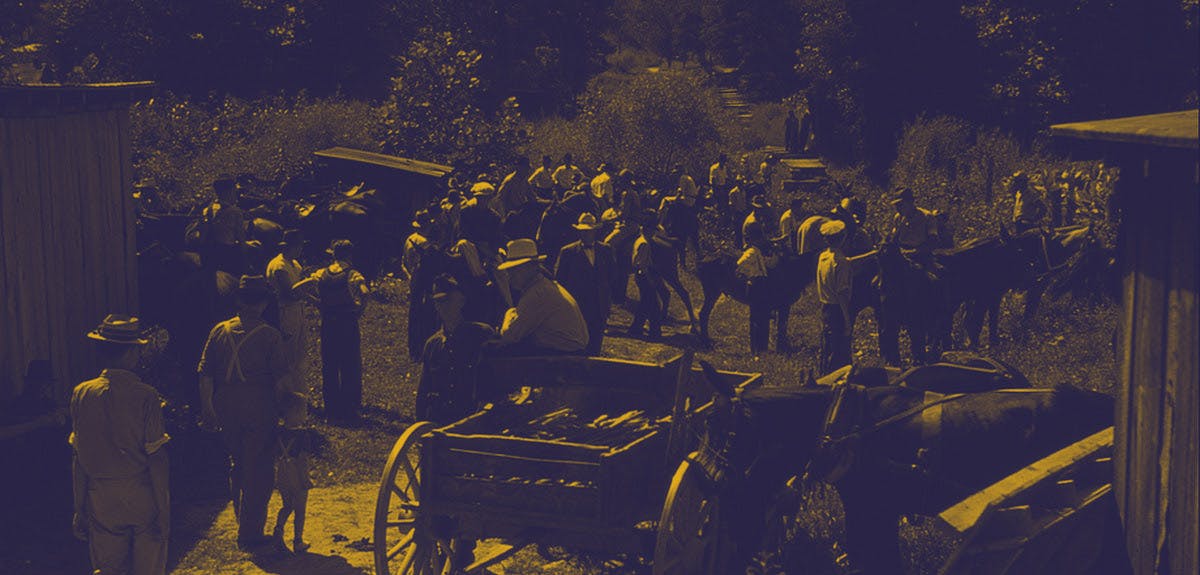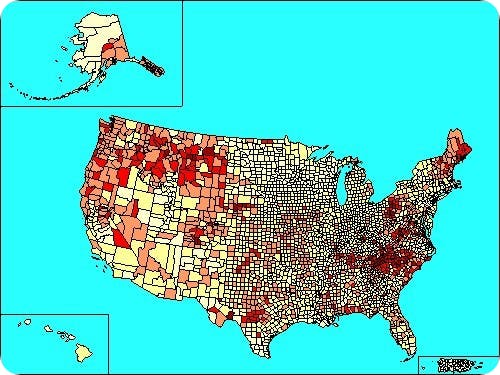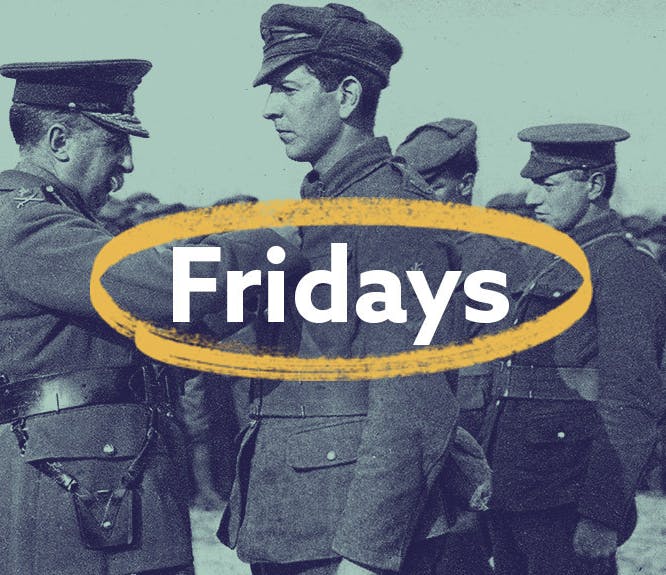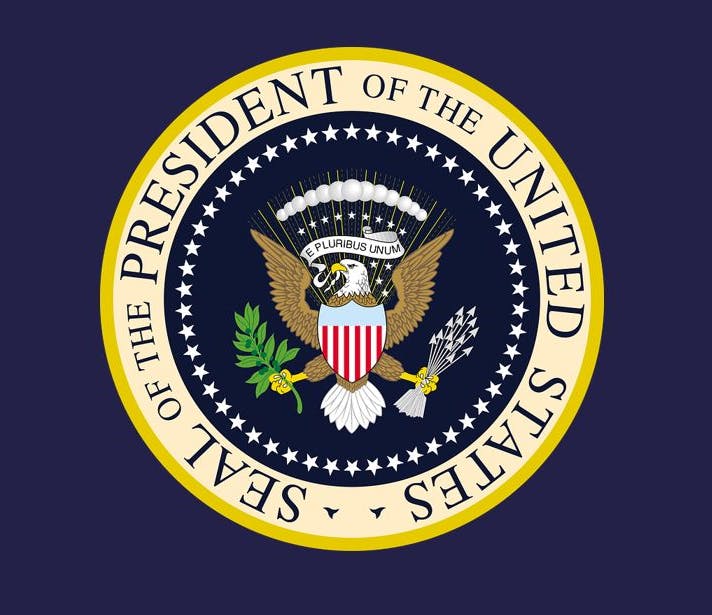Do you have Scots-Irish heritage?
3-4 minute read
By The Findmypast Team | June 22, 2021

The Scots-Irish are some of the original American immigrants and their culture has had a huge impact on the country. What's more, Scots-Irish ancestry is full of fascinating family stories.
Are you proud to be Scots-Irish? You should be. While Scots-Irish identity is often associated with either Scottish or Irish heritage, this group has such a distinct and diverse history and culture that they should be counted as an entity of their own.
Many people do not realize they're Scots-Irish. This group came to America very early and settled in parts of the country where most people simply define their heritage as "American".
Where did the Scots-Irish settle in America?
Here's a map that shows areas of America with the greatest proportion of reported Scots-Irish ancestry:

In truth, there is likely far more Scots-Irish ancestry in the southeastern US than is indicated on this map, but it gives you a good idea of the main regions where it's found.
The story of the Scots-Irish is fascinating and one you should know if it's part of your heritage. Here are some of the more interesting facts about this group.
The group has been irreversibly branded Scots-Irish, but this name is mainly an American expression that isn't widely recognized in Britain. A lot of people with Scots-Irish heritage rightfully feel the name is a bit of a misnomer. In many ways though, it may be the best way we can characterize this unique group's movement throughout history.
Centuries ago, there was a complicated flow of people between the borders of Scotland, England, and Northern Ireland. The (extremely) short version is that many Scotsmen were moved by order of the Crown from the border region and settled in Northern Ireland. They were later forced out of Northern Ireland, and many came to America. This is a big simplification, and more details can be found in our exploration of the origins of colonial immigrants.
The peak periods of Scots-Irish migration to America occurred between 1718 and 1774. Over 250,000 people came in total - far greater numbers than the Pilgrims, Puritans, and Quakers who came before them. They didn't all come at once, but rather in waves throughout the 18th century. Nearly two-thirds are estimated to have come to America in the decade immediately before the American Revolution.
The Scots-Irish weren't leaving the British Isles for religious reasons like numerous English separatist groups that preceded them. Nor were they a group of elites and their servants like the Cavaliers either.
They were the first group to immigrate to America primarily for economic opportunity. Few were wealthy, but few were totally destitute. Many were yeoman farmers or middle-class merchants that felt they were getting financially squeezed back home. The great American wilderness was far more appealing than the high rents, heavy taxes, and unfair land laws of the Crown.
Though they weren't the most destitute members of society, most Scots-Irish people were far from wealthy. Typically, they were the lowest of the ranks who could make the journey to America. After all, the passage itself costed money, which kept the poorest citizens from crossing the Atlantic.
The Scots-Irish were notably fierce and proud people. The English immigrants that had come before them all came from generally higher social ranks and were somewhat turned-off at the confidence and pride the Scots-Irish possessed.
Most Scots-Irish came to America through Philadelphia and Delaware. They quickly moved inland, mostly settling along rivers and claiming the land as they went. The primary settlers of this area, the Quakers, were generally overwhelmed by the numbers and culture of these newcomers.
The Quakers happily encouraged the Scots-Irish to move westward. Not only did they want to get rid of these unfamiliar people, they saw a strategic benefit - the Scots-Irish acted as a buffer between them and the more established settlements and indigenous tribes.
So the Scot-Irish, America's first frontiersmen, initially settled in the Appalachian mountains, but they continued to push westward in the decades that followed. These tough settlers constantly battled native American Indians and settled harsh terrain.
One very tangible contribution of the Scots-Irish to American culture is one of the most distinct regional accents. What is known today as the 'southern highland accent' - common to the Mississippi Valley, Texas, and the Southern Plains - was originally known as 'Scots-Irish speech'.
More than just the accent can be traced back to the way the Scots-Irish spoke. The famous (or infamous, depending on who you ask) double negative 'I ain't got none' was unique to this group, as is vocabulary now typically thought of as Southern such as 'fixin', 'lettin' on', or 'scoot'.
Of course, once in the United States, the dialect developed with influences from Indians, Spanish, French and German. But the way of speaking clearly descended from dialects in Northern England that were commonly spoken in Ireland and the borderlands.
These snippets are really just the tip of the iceberg - the Scots-Irish have a deep, proud, and influential history as a people. As they expanded into different regions in America, their individual cultures diverged in interesting ways.
There are a ton of resources that will help you learn the social history of your Scots-Irish ancestors. Explore Scots-Irish In North America Histories to learn more about your ancestors and how they helped shape who you are today.
Related articles recommended for you

Celebrating Canadian military stories this Findmypast Friday
What's New?

A whistle-stop tour of every US president's ancestry
History Hub

Acting genes and wartime ancestors: Here's what we've discovered about the family history of The Great Escaper's cast
Discoveries

